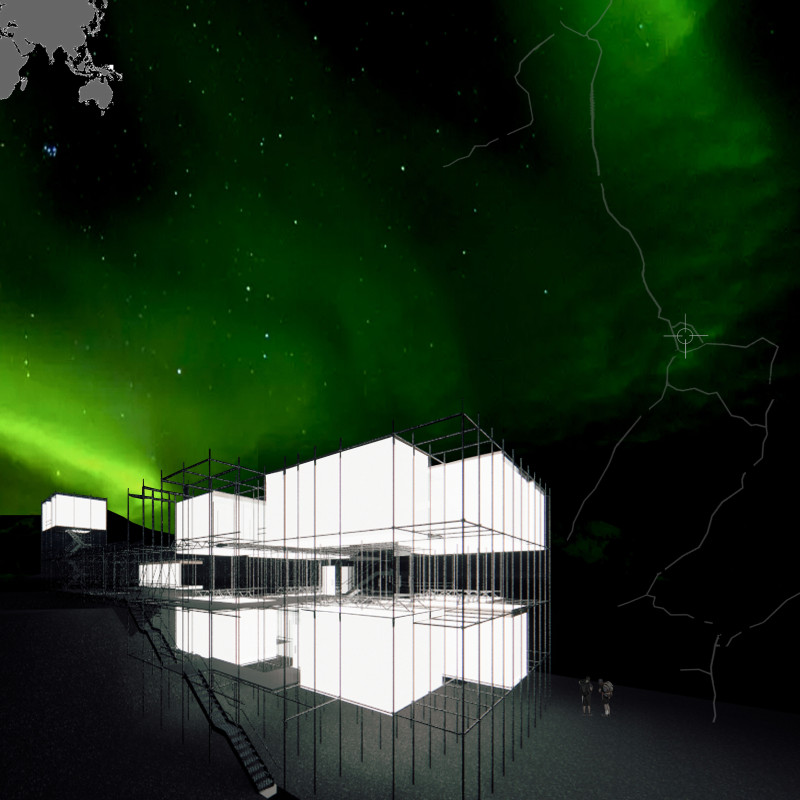5 key facts about this project
The Iceland Cave Tower project is an architectural endeavor set within a dramatic geological fault. The location shapes the design, which emphasizes a modular approach that aims to reduce environmental impact. It features a tower positioned on the European side of the fault and a hotel located on the American side. This configuration serves visitors who wish to take in the natural beauty of the area.
Structural Framework
The design utilizes the Brio Modular Scaffolding System, known for its lightweight properties. This system enables quick assembly while allowing parts of the project to be built separately. It provides flexibility for future modifications, adapting to the changing needs of the occupants. The foundation design is mindful of the fault, ensuring minimal disruption to the surrounding environment.
Visitor Experience
A significant element of the design is the connection between the tower and hotel through two cantilevered bridges. These bridges are thoughtfully engineered to accommodate the fault’s dynamic conditions. They use bridging beams and passage beams to ensure stability. Visitors can walk along these bridges for expansive views of the geological landscape, enhancing their interaction with the natural surroundings.
Materiality and Sustainability
Polycarbonate is used for the external facade, chosen for its clarity and environmental advantages. This material works well with the site, providing functionality while maintaining a connection to nature. Sustainability is a key consideration, with the modular design allowing for future disassembly and reuse. This approach aims to reduce waste and promote responsible construction practices.
Strategic Lighting
The design features integrated LED lighting along the facade. This lighting serves both practical and decorative purposes. It highlights the building's form and illuminates pathways for visitors. The lighting choices create a welcoming atmosphere, allowing people to explore the area while maintaining focus on the surrounding natural landscape. The thoughtful design encourages engagement with the site’s unique geological features.





















































